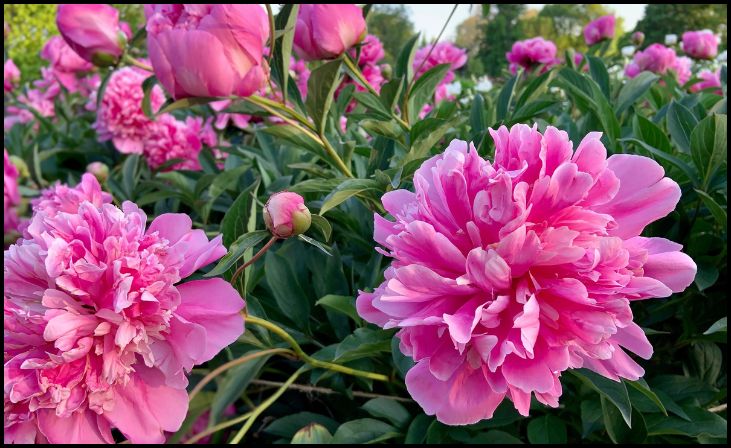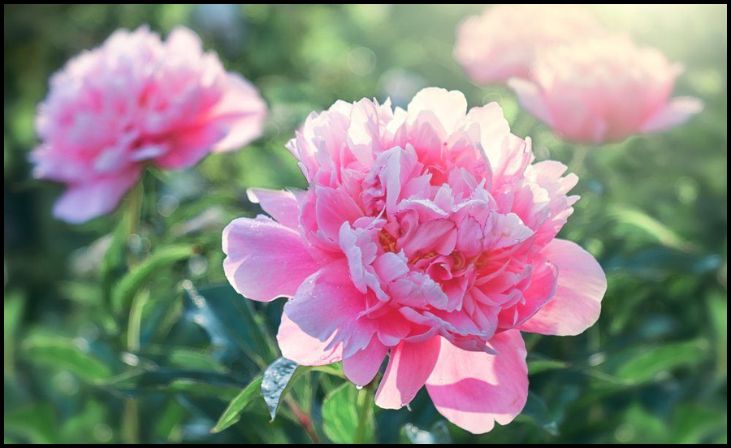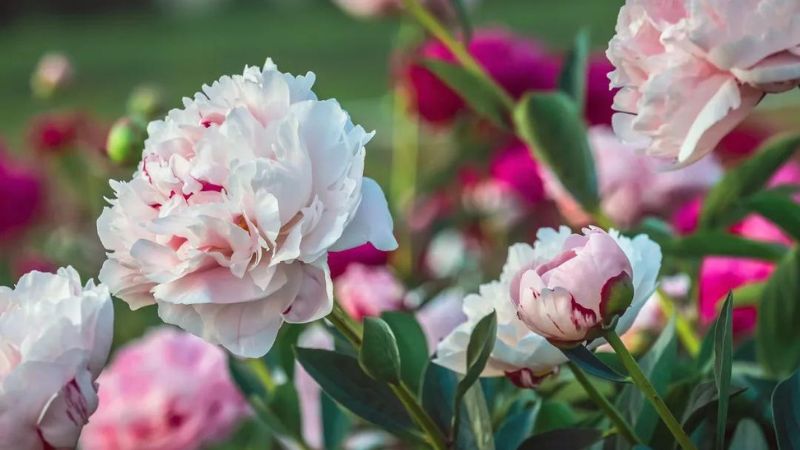Peonies are stunning perennials that brighten up gardens from spring to autumn, regenerating each year from their hardy rootstocks. But did you know that a simple, low-maintenance herb like thyme can significantly enhance their growth and health? Let’s dive into the world of peonies and discover how thyme can be their perfect companion.
What Are Peonies?

Peonies are lush, fragrant flowers known for their large, often ruffled blooms. They’re a favorite among gardeners for their longevity and ease of care. These perennials can thrive for many years, with some living for over a century! They bloom in late spring to early summer, offering a spectacular show of color and fragrance.
The Seasonal Beauty of Peonies
Peonies bloom from late spring to early summer, with the exact timing depending on the variety and climate. During their blooming season, they require minimal care—just a bit of watering, fertilizing, and deadheading spent flowers to encourage more blooms.
Seasonal Care Tips
In spring, as peonies emerge from dormancy, apply a balanced fertilizer and ensure the soil is well-drained. In summer, water deeply but infrequently to encourage strong root growth. Mulching can help retain moisture and keep weeds at bay. During autumn, cut back the foliage after it has died down to prevent disease and pest problems. In winter, especially in colder climates, mulch around the base to protect the roots from freezing temperatures.
Native Origins of Peonies
Peonies have a rich history, originating from Europe and Asia. In China, they’re known as “sho yu,” meaning “most beautiful.” Cultivated for over a thousand years, they hold a special place in Chinese culture, symbolizing prosperity and honor. Their historical significance and stunning beauty have made them a beloved plant across many cultures.
Geographical Adaptability

Today, peonies are grown worldwide, adapting to various climates. They prefer temperate regions with cold winters and warm summers, which help them break dormancy and bloom vigorously. Peonies need a period of cold dormancy to thrive, prefer full sun but can tolerate partial shade, and require well-drained soil to prevent root rot.
Understanding Tree Peonies
Tree peonies, or Paeonia suffruticosa, differ from herbaceous peonies in that they have woody stems and larger flowers. They can reach up to six feet tall and live for many years, producing stunning single or double blooms in various colors. Popular varieties include ‘Hana Kisoi’ with pink, ruffled petals, ‘Shimadaijin’ with deep purple blooms, and ‘Kinkaku’ with golden yellow flowers.
Exploring Paeonia Lactiflora
Paeonia lactiflora, also known as the Chinese peony, gained popularity during the Edwardian era. These herbaceous peonies are known for their fragrant, double flowers and come in a range of colors. Varieties like ‘Sarah Bernhardt’ with soft pink blooms and ‘Festiva Maxima’ with white flowers and red flecks are particularly cherished. Plant them in well-drained soil with full sun exposure, fertilize in early spring, and water regularly during dry periods.
The Charm of Intersectional Hybrids
Intersectional hybrids, or Itoh peonies, combine the best traits of herbaceous and tree peonies. They have sturdy stems, large blooms, and an extended flowering period. Popular hybrid varieties include ‘Bartzella’ with bright yellow, semi-double flowers and ‘Cora Louise’ with white blooms and lavender centers. These hybrids require well-drained soil and full sun, and pruning after blooming helps maintain their shape and health.
Spotlight on Paeonia Mlokosewitschii
Paeonia mlokosewitschii, affectionately known as “Molly the Witch,” is a herbaceous peony with unique lemon-yellow flowers and bluish-green foliage. Plant them in a sunny location with well-drained soil. Mulching helps retain moisture and suppress weeds, and dividing clumps every few years prevents overcrowding and maintains their vigor.
Paeonia Officinalis: The Classic Beauty
Paeonia officinalis, the common peony, has been cherished for centuries for its medicinal properties and ornamental beauty. Its vibrant blooms and ease of care make it a garden favorite. Flowers range from deep red to pale pink, and the plant prefers sunny spots and rich, well-drained soil. Cut back foliage in autumn to prevent disease and maintain plant health.
A Palette of Colors

Peonies come in a rainbow of hues, including pink, red, orange, yellow, and white. Some varieties, like ‘Command Performance,’ even change color as they bloom, transitioning from fiery pink to a soft pastel. This wide range of colors allows gardeners to create stunning, colorful displays in their gardens.

